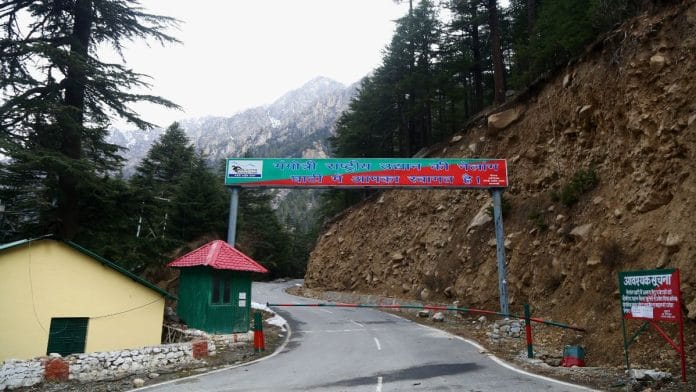Nelong: They were very close to taking the government to the high court, suing it for occupying their homes for the past 60 years. But a remarkable change of heart unfolded with the visit of Prime Minister Narendra Modi who promised to give them back their original habitat—and more.
Nelong and Jadung, barely 45 km from the India-China LAC in Uttarakhand’s Uttarkashi district, is brimming with excitement and anxiety at the same time. While the promise of access to their land they lost in the 1962 war and a new tourism circuit makes them hopeful, the reality of resettling in an abandoned land is unsettling.
“We have decided to wait for some more time as we have already been waiting for the last five decades. As the PM himself gave assurance, it brings some new hope because no other PM in the past focused on this issue,” said 67-year-old Bhagwan Singh Rana, a resident of Jadung village, who now lives in Veerpur village in Uttarkashi’s Dunda panchayat.
For Rana, Veerpur is his winter sojourn, more than 100km away from his native Jadung village. Rana was just seven when he was forced to leave his village. Till 1962, when the war broke out, Jadung was used as a summer habitat by Rana’s ancestors. The conflict changed the fate of the two villages turning them into bhutiya gaon (ghost villages), fully controlled by the Army, the Indo-Tibetan Border Police (ITBP) and forest department.
Now, the Modi government is correcting the memory of the 1962 war, the loss and trauma suffered by the residents. It’s trying to overturn that long painful memory of lost homeland. And the government is not doing this in a hurry. They have the plan ready under PM Modi’s Vibrant Villages Programme. The Nelong valley, also known as Ladakh of Uttarakhand because of a similar geography, is slowly being opened for tourists. The administration is planning to lift the need of an Inner Line Permit to enter the valley that passes through Bhaironghati—the picturesque confluence of Bhagirathi and Jadh Ganga. But residents of the two villages living away from their homes for over 60 years are filled with apprehensions. The new reality of settling in with a constant flux of tourists isn’t fully convincing to them.
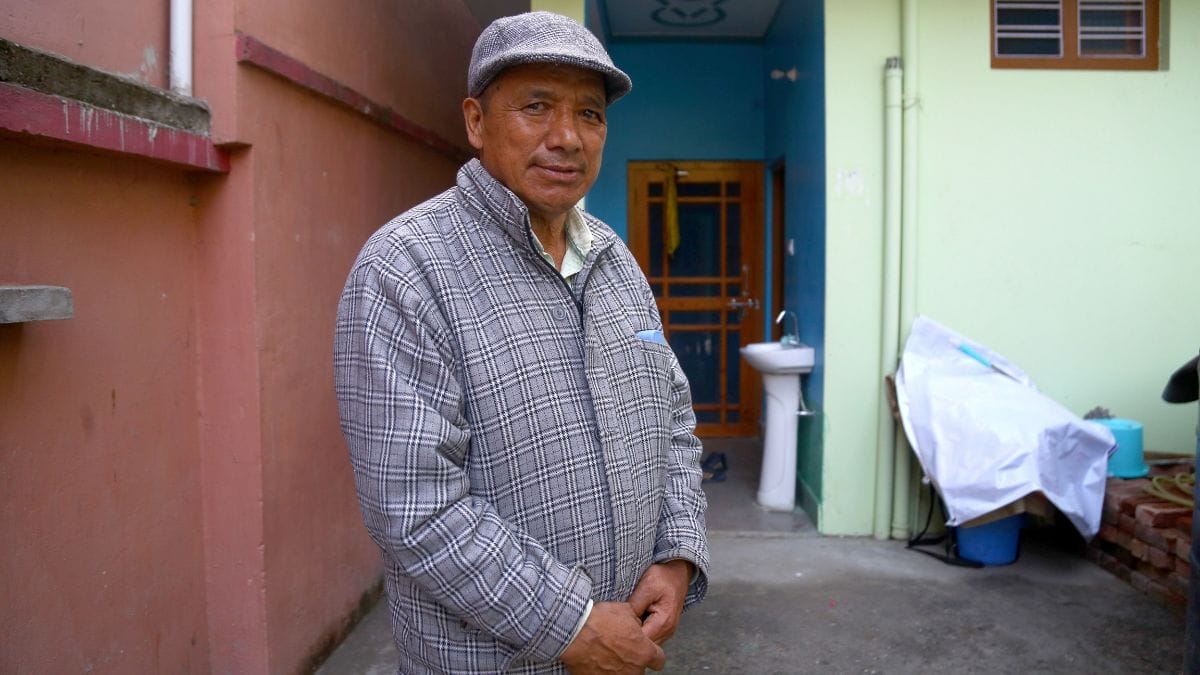
Ancestors of the villagers first settled in Nelong and Jadung around 1720 before being forced out in 1962. And they never accepted their new identity.
“The most painful thing is that we have to get a permit to enter our own village. It feels like we are outsiders in our own home. The generation after 1962 grew up with the same feeling,” said Rana, sitting at his home at Veerpur village, surrounded by photos of PM Modi from his 2018 visit to Harsil. Rana stands with Modi in one of the pictures. The PM had celebrated Diwali with the Army back then and promised to rehabilitate the villagers.
Also read: Five gunshots in NCR that killed the big fat Indian wedding in one month
The resettlement plan
Rana has seen the landscape of Nelong and Jadung — surrounded by high altitude snow-capped mountains—change as the Army solidified its control over the villages post 1962. He used to take his cattle for grazing and over the years saw the houses disappear and replaced by defence structures.
The Nelong valley, a cold desert mountain region situated at an elevation of 11000 feet, boasts stunning vistas, ancient trade routes and an array of wildlife, including the elusive snow leopard. The region is characterised by harsh winters with temperature plummeting to as low as -20 degree and sparse rainfall. The valley’s high altitude coupled with its proximity to the Tibetan Plateau creates a unique microclimate with cold winds howling through the valley.
Now, civilian lives will return to these areas as the administration plans to dot these villages with homestays, six of which will come up in Jadung. The village was home to 23 families before 1962.
“The files for 17 more homestays are pending for approval, but the work of redeveloping these two villages is going on at a fast pace. Although there is no deadline for its completion yet,” said Sunder Lal Semwal, Chief Development Officer, Uttarkashi. Semwal is overseeing the vibrant villages programme in the district.
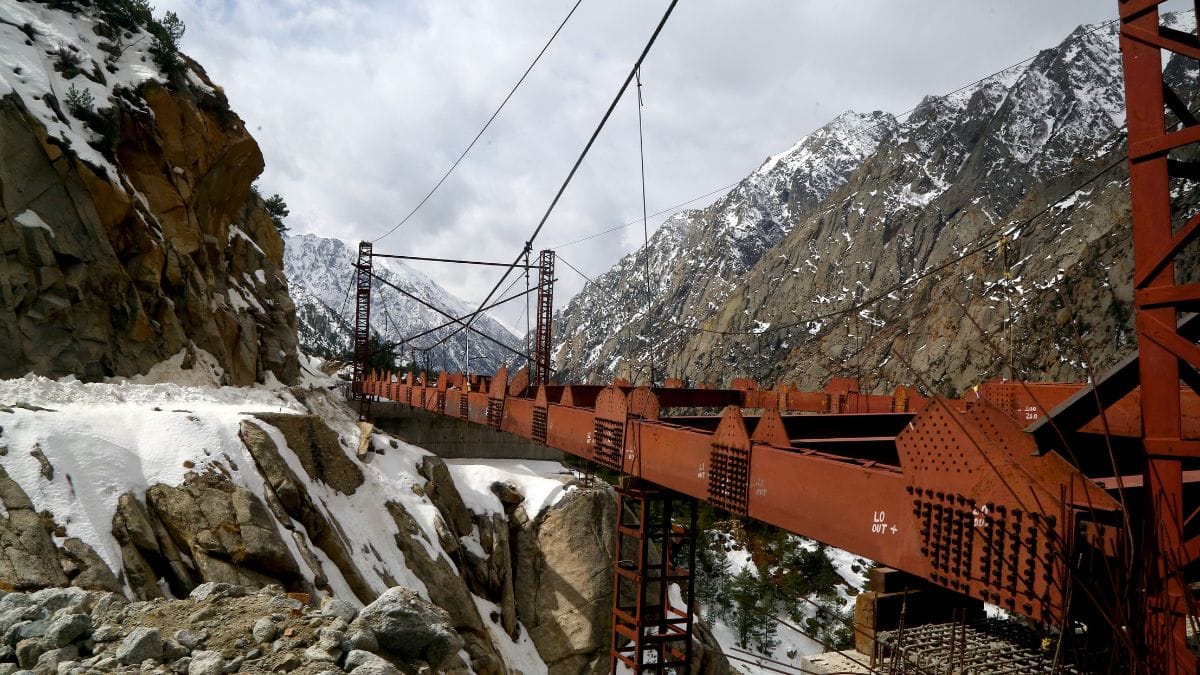
In Uttarkashi district, 10 border villages have been brought under the Vibrant Village Programme that was launched in February 2023 to provide connectivity, infrastructure, and basic amenities to settlements once considered the country’s last villages. Modi, however, has called them the first villages of India and asked to take a 360-degree view of tourism.
“We are making this area tourist friendly. For this, many treks will be developed, facilities will be available for bikers and there is also a plan to build a museum there,” said Semwal. The museum will show the history of the Bhotiya tribes—the residents of these villages—and their trade exchanges with Tibet. The homestay project is being executed by the state tourism department and the Garhwal Mandal Vikas Nigam (GMVN). Rs 3.5 crore has been approved for it.
Last year, the revenue department officials surveyed the Jadung village and also sought permission for using the land from the forest department as it comes under the Gangotri National Park area. In the first phase, footpaths are to be paved and three viewpoints will be constructed.
The administration is also coming up with a trekking track to between Janak Tal and Jadung, a 10km-long trail which would be world’s second-highest, at an elevation of 5400 metres. Officials have already conducted an inspection for opening this trek.
PM Modi laid the foundation stone for the Janaktal trek on 27 February during his visit to Mukhba in Harsil valley and also called for baramasi Paryatan (year-round tourism) in Uttarakhand. The two new tracks—Janak Tal and Neelapani-Muling pass tracks—will soon open for the tourists and will give a new dimension to adventure tourism in the Nelang and Jadung valleys.
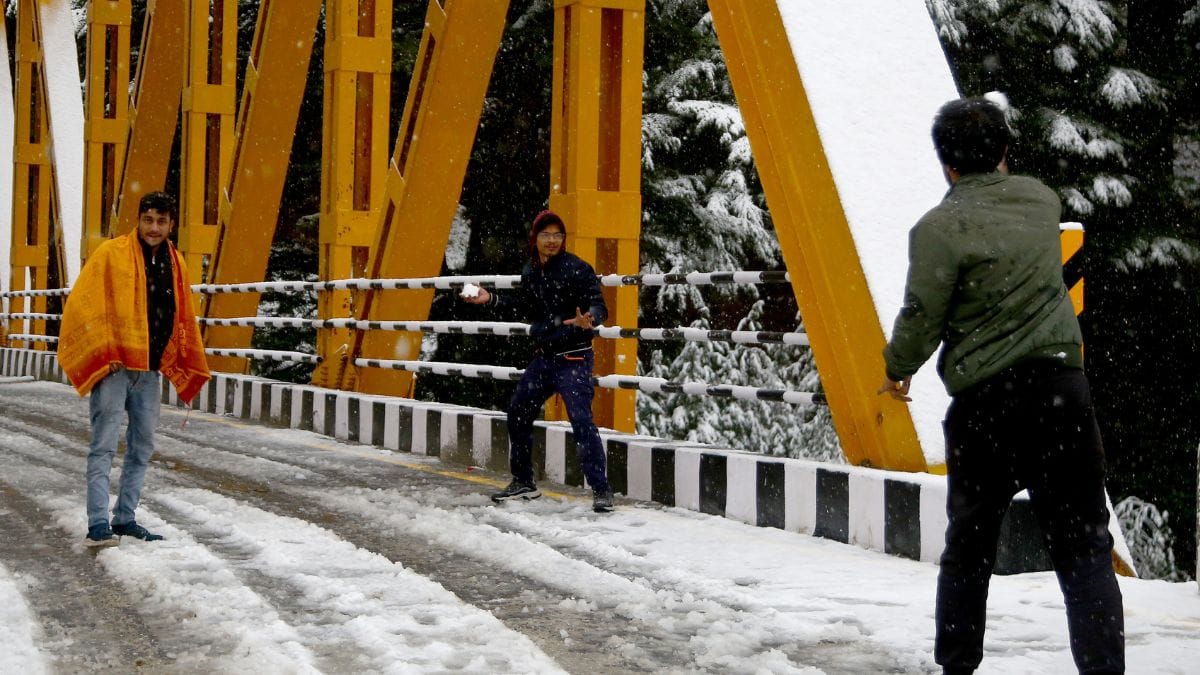
According to Uttarkashi DM Meharban Singh Bisht, a plan has been initiated to develop the area along the lines of Ladakh, based on its geographical conditions.
“People have forgotten, but we can’t forget. We have launched a campaign to rehabilitate those two villages and are moving towards making it a major tourist destination,” said Modi, adding that our effort is that the border areas of Uttarakhand should also get special benefits of tourism.
Before the war, villagers in Nelong valley indulged in trade with Tibet and farming of potatoes. Now, they said, it will be difficult to connect everyone in a village to the same livelihood.
“The whole village cannot depend on just homestays. If so many tourists do not come there, how will everyone survive? Tourism will be beneficial but we cannot link everyone to one livelihood,” said Rana.
People have forgotten, but we can’t forget. We have launched a campaign to rehabilitate those two villages and are moving towards making it a major tourist destination.
PM Modi
Also read: Marathons are no longer reserved for elite. Small-town, middle-class India wants in
The homeless
Negi and others have a life away from Nelong and Jadung, their only active connection being the annual kuldevi puja and the animal grazing. They have seen their home from an imaginary fence for six decades.
Every year in the month of June, a group of 150-200 people from Dunda and Bagori villages go to Nelong and Jadung. It’s a one-day trip, permission for which has to be taken from the administration weeks in advance. Preparations for the day start at 5am. Everyone brings cooked food and items for worship from their homes.
“The worship of Ringali Devi and Lal Devta is followed by a dance after which everyone returns by evening. No one is allowed to stay there at night,” said Sarita Rawat, the head of Baghori village, whose ancestors belonged to Nelong village. “It is very painful to go there and not be able to see one’s village,” she said.
The Army has given this annual ritual a name many can remember—they call it Jadh festival.
When the war broke out in October 1962, residents of Nelong and Jadung were at their winter sojourn – Bagori and Dhundha village. Negi carries a hazy memory of that time. The sound of the flowing Jadh Ganga river passing through Nelong village and the trade memories between India-Tibbet still lingers in his mind.
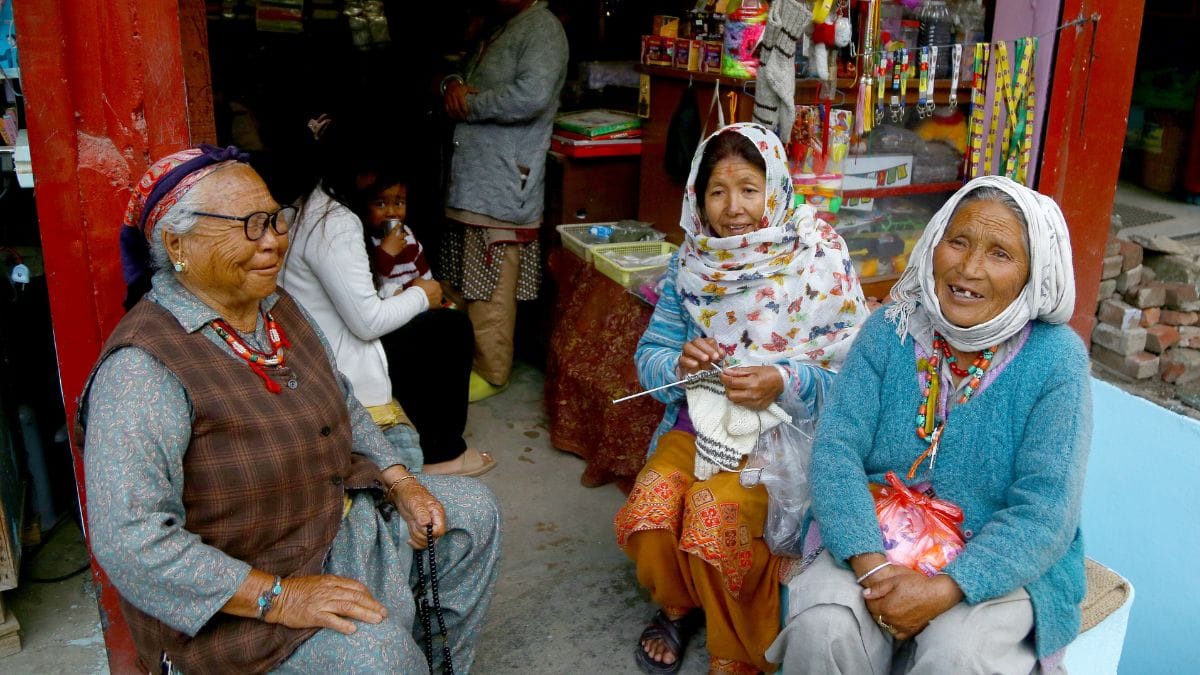
“When we tried moving back to our villages, the administration stopped us on our way, saying it is a matter of national security, so we have to stay at our summer locations,” recalled Negi, sitting at this wooden house, surrounded by apple orchards in Bagori village.
In 1962, both the villages comprised 40 families, which has now increased to 100. Marriages also take place between the two villages.
Negi said their house was taken away from them overnight and nobody understood what happened.
“All the things were kept in our houses. We were not even given a chance to bring them back. All the memories remained confined within closed doors and kept getting destroyed year after year,” said Negi as he sipped tea made of Chora leaves.
Initially, villagers received rent from the Army but that stopped after a few years. Later, the houses were demolished and replaced with bunkers.
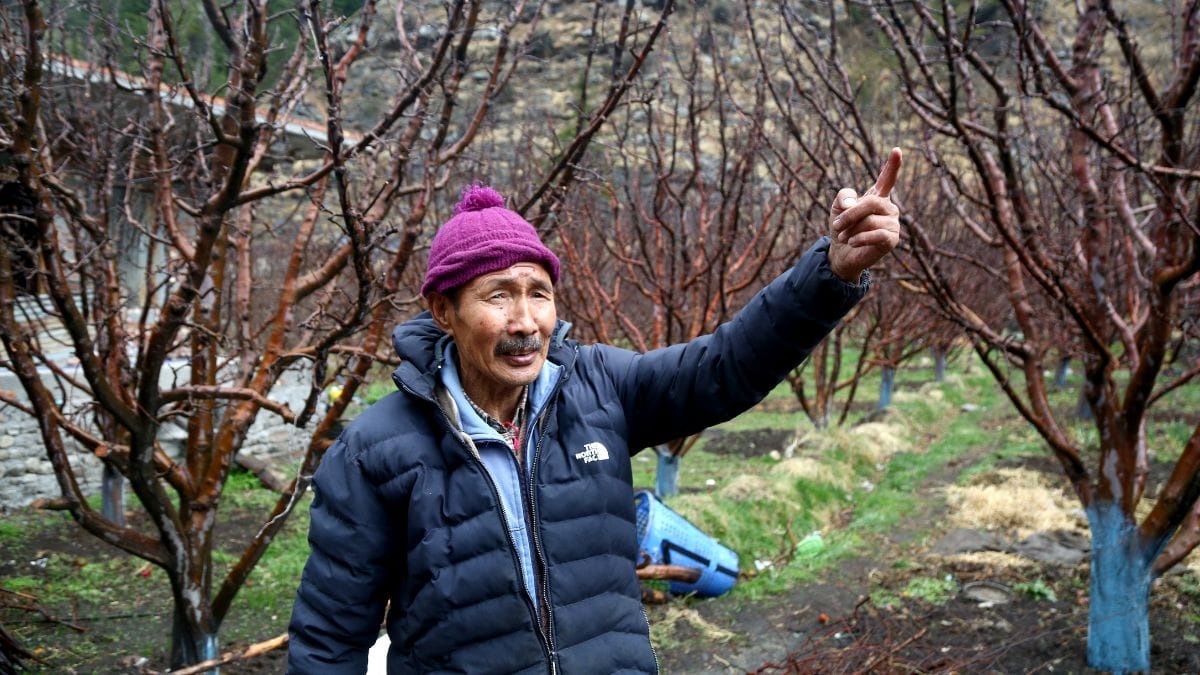
Now a big board of Rajputana Rifles has been installed at Nelong village with the motto Veer Bhogya Vasundhara (The brave shall inherit the Earth) embossed on it. But civilian entry into Nelong can happen only after permission from SDM, Uttarkashi.
The village area has been turned into a cantonment region.
In 2024, during the visit to the Uttarakhand’s border areas, Chief of Defense Staff General Anil Chauhan also directed the local Army formations to help rehabilitate Nelang and Jadhang villages.
Till 1962, Nelong and Jadung residents for centuries had traversed the treacherous terrain of the Gartang Gali area, famous for its 150 year-old wooden bridge. They braved the harsh Himalayan climate to indulge in a thriving trade with Tibet, which involved wool, salt, precious stones.
“Before 1962, India Tibet Market was established in Nelong. The villagers of Nelong, Jadung and Bagori contributed to its establishment,” reads a plaque near the entrance of Baghori village in Harsil Valley.
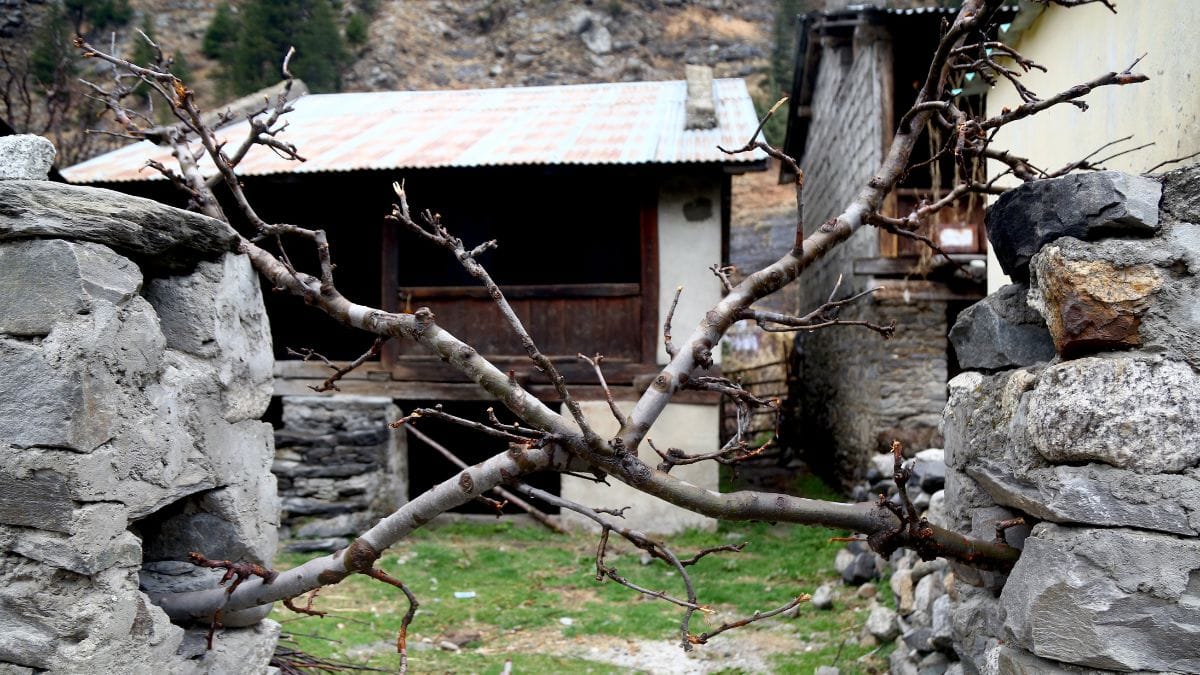
Also read: Life inside India’s posh senior communities. Karaoke, cocktails, billiards, aqua aerobics
The uncharted
On 6 March, PM Modi flagged off the first-ever bike and trek rally that entered Nelong valley. The snow-capped mountains reverberated with the roar of BMWs and Royal Enfields. The tourists had found another virgin territory. Their excitement a testament to the region’s untapped tourism potential.
The day before the PM’s arrival, all roads to Nelong valley from Bhaironghati were blocked due to heavy snow on the roads. The Border Road Organisation (BRO) had to clear the snow from Harsil to Nelong valley overnight.
But heavy snowfall didn’t dampen the spirit of Dehradun-based Wolves Moto Club. The bikers were excited to reach Mini Ladakh. ITBP and Army personnel joined the bikers with their trek cars.
“Nelong was totally new terrain for us. We have biked across the country from Nagaland to Ladakh, but the Nelong trip was exciting as for the first time bikers were allowed to this territory,” said Manendra Singh Rawat, part of the rally. Their journey along the Bhagirathi and Jadh Ganga rivers was 40 km long.
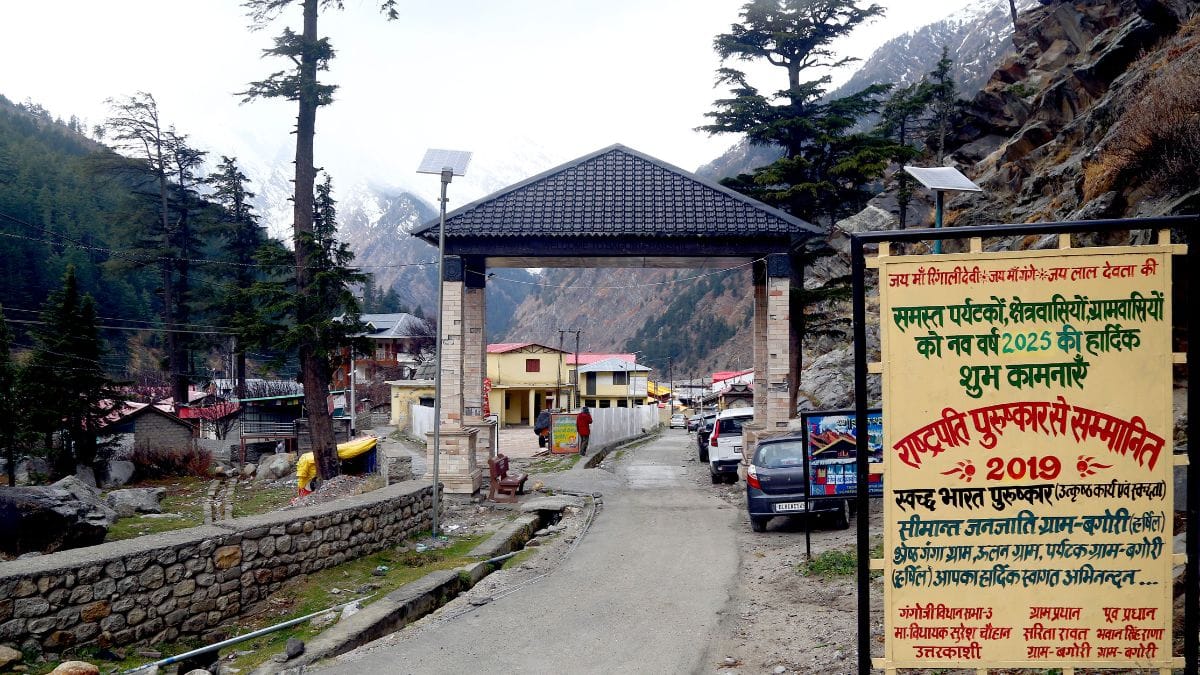
While their trip was supposed to end at Jadung, due to heavy snow, they had to return from Nelong village.
“This place is a hidden treasure. It is a perfect place for bikers, which is almost like Spiti and Ladakh. In the coming time, the craze for it will increase a lot among bikers. What we have started is not going to stop,” said Rawat.
Now, Nelong’s imprint is growing on social media as the bikers who took the maiden trip to Nelong have spread pictures and videos on the internet.
“It was an amazing moment when our beloved Prime Minister Narendra Modi flagged off our winter expedition to Nelong valley to promote tourism in our state,” wrote Manav Singh alias Unbrokenstallion in his Instagram post, sharing the bike rally clip.
The 23-km journey from Bhaironghati to Nelong follows a spiral path along the river and is full of adventure. On the route, many new bridges are under construction and many were completed after 2014.
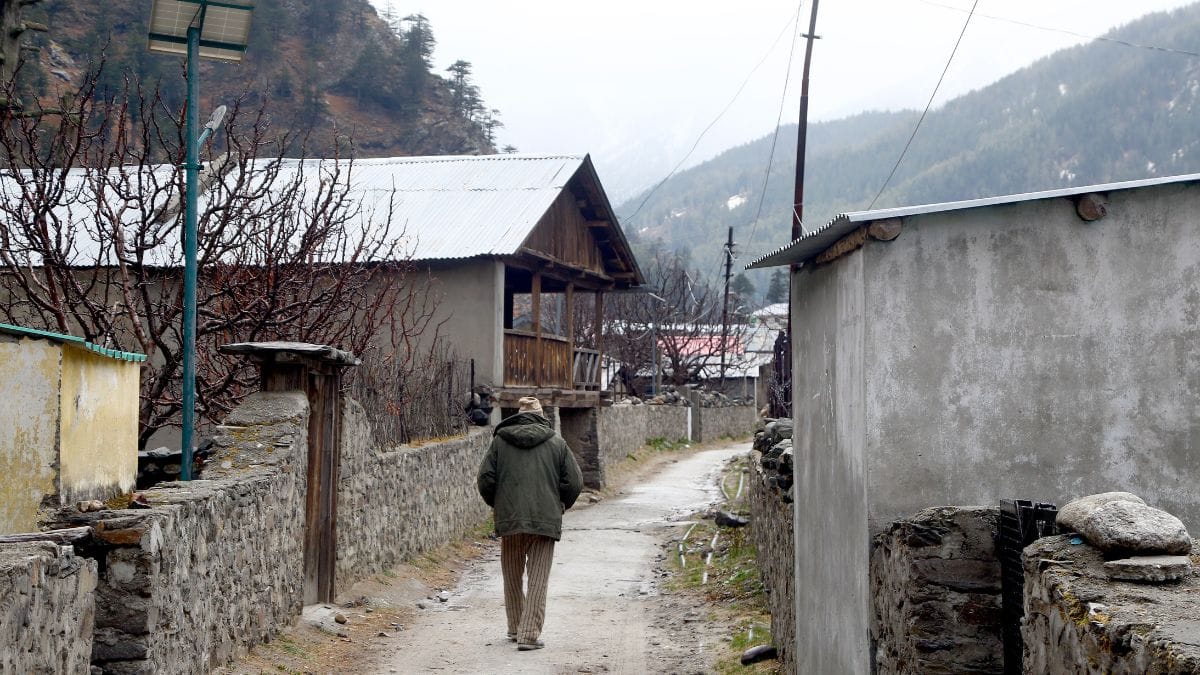
Also read: Punjabi Christian pastors are mixing Bible with bhangra. Making Jesus relatable
Life in a new village
Yogya Ram Negi was busy hosting tourists at his apple orchards spread in the backyard of his house in Bagori village. The village, located 45km from Nelong was declared the best Ganga village for overall development at the Swachh Mahotsav 2019. However, not all his tourist experiences have been pleasant.
One day, while Negi was visiting the Harsil market, he came across tourists asked him, “where do the Tibetans live?”
“We are not Tibetans but Indians. We only had trade with Tibet before 1962,” said Negi.
Several homestays have popped up in Bagori village after 2020.
Almost all the houses in Bagori were locked. And most of the them carrying a homestay board. In winters, the residents move to Veerpur village as Bagori gets very cold. “Now this is becoming a new business for the people here. Apple farming has been another source of income in this area.”
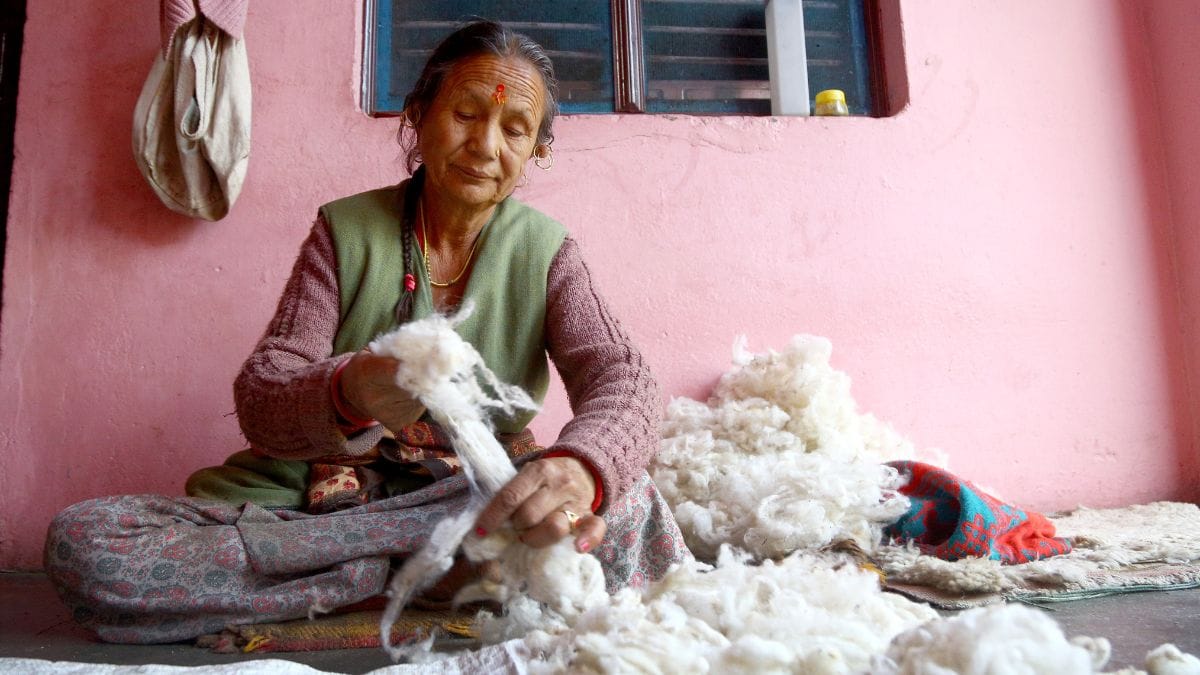
“Staying in the center of Apple garden,” read a homestay board.
The people of Nelong and Jadung too move to Veerpur in Dunda Panchayat, about 90 km from Bagori. While the houses in Bagori are small and made of wood, Veerpur village has two-storey houses. Jaspal Singh Rawat sat at his Veerpur house, surrounded by wool. Wool work has been passed on in the village through generations and is the main source of livelihood. “Since we still do sheep rearing, we earn money by selling things made from their wool in the market. This work is done in dozens of houses,” he said.
But the new generation is not interested in this centuries-old family work. They have migrated to cities and do not want to return.
“If they do not come to Bagori and Dunda, then how will they settle in Nelong?” asked Rawat, adding that only twenty to thirty people of his age lived in the village. “Every year someone or the other is dying.”
The new generation is used to living in comforts and in Nelong and Jadung there is none—no electricity, no telephone or other facilities. “In my opinion, the decision to settle there is not practical,” said Negi.
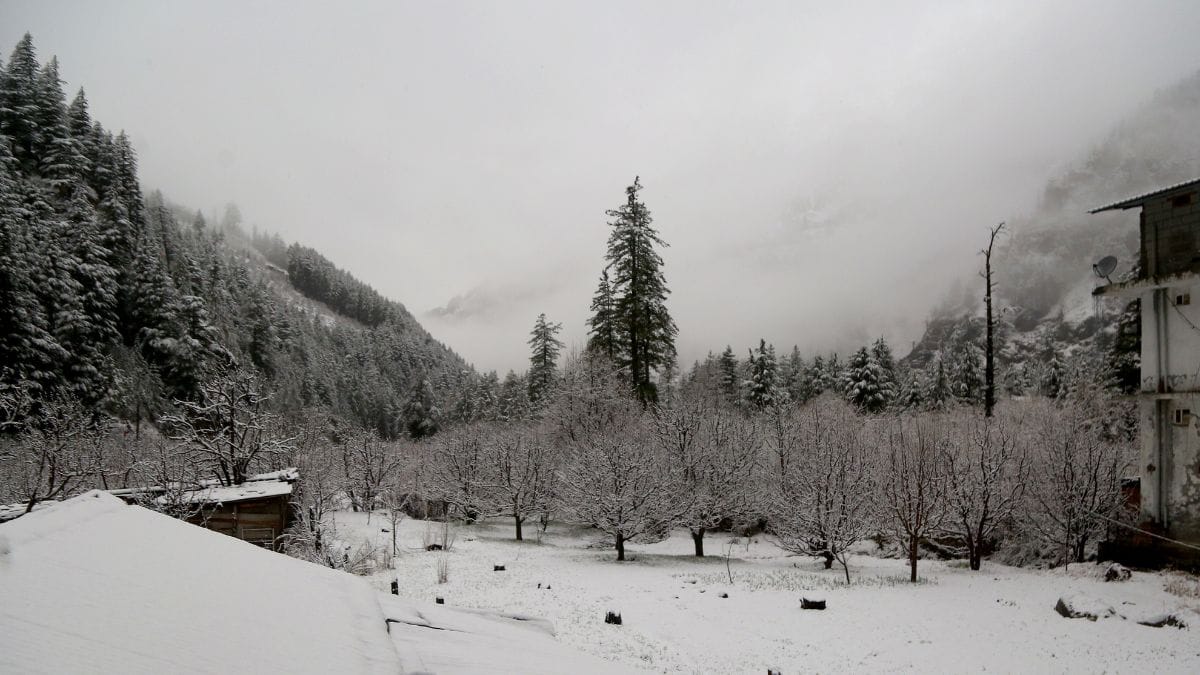
Negi said the villagers should be compensated and land should be allotted in the lower part of Uttarkashi since the government has occupied the land since 1962. “Now the government is making excuses that we will settle you people again. The village cannot be settled only on the basis of tourists because this area remains closed for many months due to heavy snowfall.”
But Negi is aware of the power of the government.
“If the government forcibly says that you have to settle down, then we have to. We can not fight with sarkar (government),” he said.
(Edited by Anurag Chaubey)



